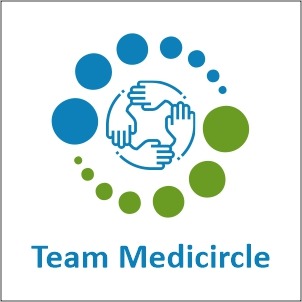March 18, 2025: Newcastle University researchers, the Wellcome Sanger Institute, and their collaborators utilized single-cell sequencing and other genomic techniques to develop an atlas and gain insights into the formation of human skin, including hair follicles.
These findings hold potential for applications in regenerative medicine, such as creating new hair follicles and improving skin transplant procedures for burn victims.
Published in in Nature, the study also involved creating a skin "mini organ" in a dish capable of growing hair. By using this organoid, the researchers demonstrated the significant role immune cells play in scar-free skin repair, paving the way for clinical advancements to prevent scarring after surgery or enable scarless healing following injuries.
‘Exciting strides’ being made
As part of the Human Cell Atlas initiative, which aims to map all cell types in the human body to revolutionize the understanding of health and disease, researchers have provided a molecular "recipe" for constructing skin and developed a new organoid model to study congenital skin disorders.
The skin, the body's largest organ, spans an average of two square meters. It serves as a protective barrier, regulates body temperature, and possesses self-regenerative capabilities. Skin develops in the sterile environment of the womb, with all hair follicles forming before birth. Although follicles undergo cycles after birth, no new ones are created. Remarkably, before birth, the skin can heal wounds without leaving scars.
Studying human skin development has been challenging due to key differences in animal models. Researchers within the Human Cell Atlas project are working to unravel how skin is constructed, including the spatial and temporal dynamics of cells and the influence of genetics. This understanding could shed light on how specific mutations lead to congenital skin conditions, such as blistering disorders and scaly skin.
Dr Hudaa Gopee, co-first author from Newcastle University, said: “We’re excited to have made a skin organoid model that grows hair. In this process, we uncovered a new, important role of immune cells in promoting the growth of blood vessels in developing skin tissue, which could help improve other organoid models. These immune cells, called macrophages, also appear to play a key part in scarless skin repair in prenatal skin. Our findings could inform clinical advances to avoid scarring after surgery.”
In this groundbreaking study, researchers from Newcastle University, the Wellcome Sanger Institute, and their collaborators created the first single-cell and spatial atlas of human prenatal skin.
The team analyzed prenatal skin tissue samples by breaking them down to study individual cells in suspension and examining cells within their native tissue environment. They employed advanced single-cell sequencing and spatial transcriptomics to investigate cellular changes over time and space, focusing on the processes governing skin and hair follicle development. The study detailed the steps involved in human hair follicle formation and highlighted differences from mouse hair follicles.
Using adult stem cells, the researchers developed a skin "mini organ," or organoid, capable of growing hair. They compared the molecular profiles of these organoids to prenatal and adult skin, finding that the organoid model closely resembled prenatal skin.
The study revealed that blood vessels in the organoid were underdeveloped compared to prenatal skin. By introducing immune cells known as macrophages into the organoid, the researchers found that these cells significantly enhanced blood vessel formation. The team used 3D imaging to examine this vascular development in detail.
While macrophages are known to defend the skin against infections, this research is the first to show their crucial role in early human skin development by supporting blood vessel growth. This discovery opens new possibilities for improving vascularization in other tissue organoids.
‘Amazing clinical potential’
This study provides a detailed molecular "recipe" for the formation of human skin and hair follicles. These findings could pave the way for regenerative medicine applications, including the creation of new hair follicles for skin transplants to treat burn victims or individuals with scarring alopecia.
The atlas of prenatal human skin developed in the study will help pinpoint the specific cells where genes linked to congenital hair and skin disorders, such as blistering and scaly skin conditions, are active or expressed. The researchers discovered that these disorder-associated genes are expressed in prenatal skin, indicating that their origins trace back to development in utero.
The skin organoids created in this research serve as a highly accurate model for studying these congenital diseases, offering new avenues for understanding and potentially treating such conditions.
Dr Elena Winheim, co-first author from the Wellcome Sanger Institute, said: “With our prenatal human skin atlas, we’ve provided the first molecular ‘recipe’ for making human skin and uncovered how human hair follicles are formed before birth. These insights have amazing clinical potential and could be used in regenerative medicine, when offering skin and hair transplants, such as for burn victims or those with scarring alopecia.”
.jpg)
 Newcastle University’s researchers, for the first time, have created a single-cell atlas of prenatal human skin to understand how skin forms, and what goes wrong in disease.
Newcastle University’s researchers, for the first time, have created a single-cell atlas of prenatal human skin to understand how skin forms, and what goes wrong in disease.










.jpeg)

.jpeg)
.jpeg)
.jpeg)

.jpeg)
.jpeg)
.jpeg)
_(1).jpeg)

_(1)_(1)_(1).jpeg)
.jpeg)
.jpeg)
.jpeg)






